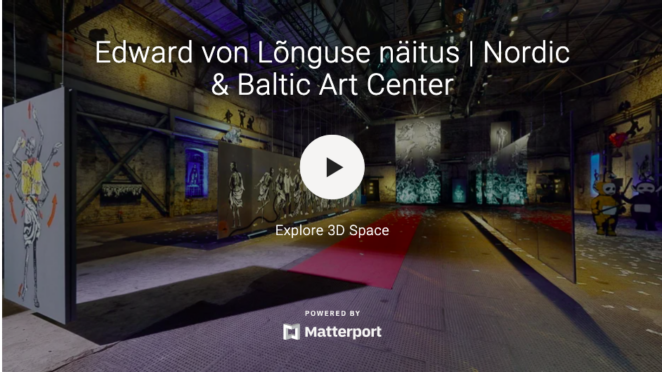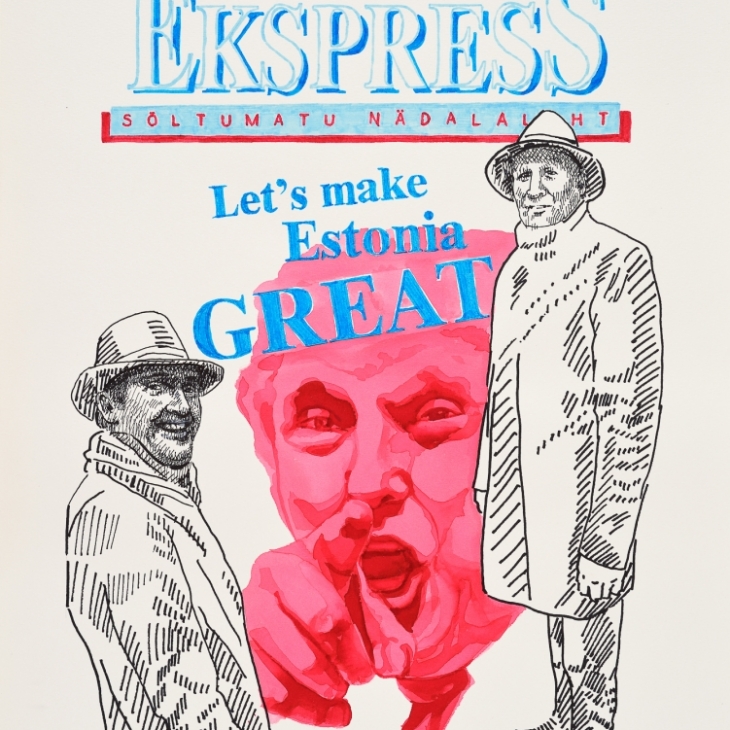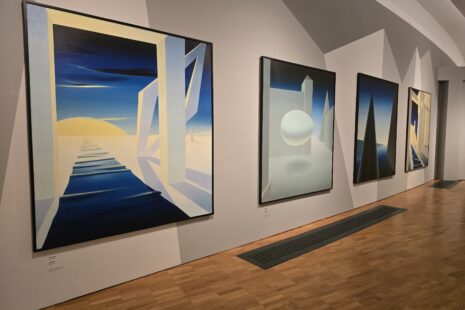According to Andra Orn, the curator of the Tallinn Biennial’s main exhibition, they decided to create a virtual tour after Doomsday Cathedral drew significant international interest. “As we all know, travelling wasn’t very convenient this summer. We really wanted to share the artworks of this mysterious street artist with people outside of Estonia, so a virtual tour was perfect for this. Also, the concept of virtual reality and hyper-reality match up well with Lõngus’s style and artworks. His thoughtful artistic expressions, together with our cultural context, could be used as learning material in school art classes while inviting a younger audience to explore contemporary art.”
One of the ways to experience Doomsday Cathedral is to take the virtual tour on a laptop or smartphone, where you can access the venue, explore the outstanding artworks and read additional info about the exhibits. Using a VR set adds an extra layer to the experience. “With the VR set, it is possible to ‘enter’ the exhibition, move from one artwork to another and experience an atmosphere similar to the one in the old factory building where the show took place.” For the full experience, tour Doomsday Cathedral with the soundtrack by Taavi Tulev playing.

The virtual tour was created by AVAR Agentuur.
Doomsday Cathedral by Edward von Lõngus is dedicated to what he calls the only universal religion that unites all countries and nations, regardless of cultural background, skin colour or idea of God. “The only agreed imaginary value that we all share a common understanding of is MONEY. We all worship the God of money in the same way. A banknote is a religious unit whose power is recognized by all. Faith is, in fact, the only value that gives the banknote its guarantee. Without faith, he would be just a piece of paper. However, our belief in the value of this piece of paper is firm and unwavering that we are ready to follow it until the end of the world. Money created our world. Money also destroys it,” says the introductory text of the exhibition.
The most outstanding artworks at the exhibition include Lõngus’s graffiti series inspired by Danse Macabre, a painting in the church of St Nicholas in Tallinn by the late medieval German master Bernt Notke. The Lõngus artwork, executed on steel plates and suspended from the ceiling, is imposing, taking up 25 square metres and weighing more than half a tonne. The newest artwork at the exhibition was Lõngus’s “remix” of the frescoes of Michelangelo’s Sistine Chapel depicting the Last Judgment.










